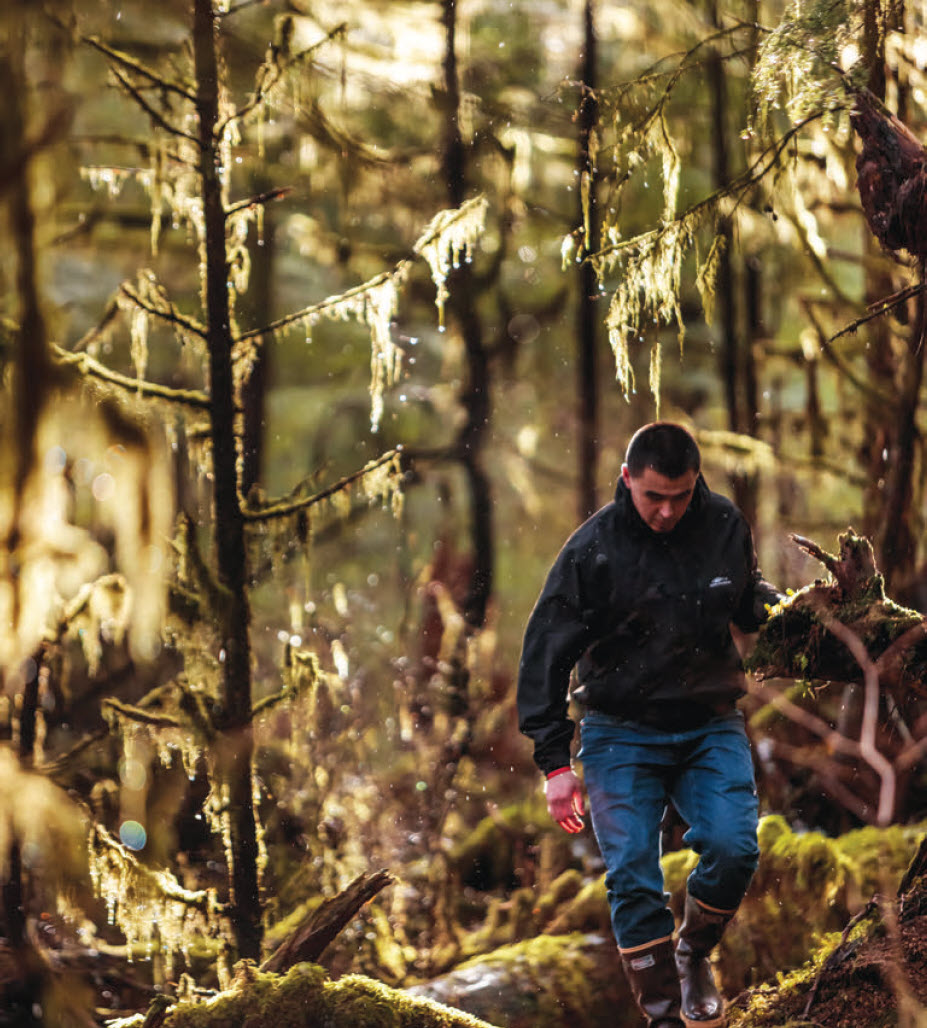THESE FORESTS COMPLETE US
THE STORY OF SEALASKA’S CARBON OFFSET PROJECT
Since the founding of Sealaska in 1971, we have harvested our ancestral forest to provide for our people. In fact, timber and second growth management have been primary economic drivers throughout Sealaska’s history.Yet harvesting our forests is no longer our only option. Today, our forests can provide for us in a different way. By managing our forests to generate carbon-offset credits, our lands are still available to support recreation and tourism, maintain water quality, and preserve salmon habitat.
Through the State of California’s Cap-and-Trade Program, we have preserved 165,000 acres of forest - roughly one-half of our land - for the next 100 years.
In short, the Carbon Offset Project pays us to continue to sustainably manage our lands while maintaining critical access for our communities. The land placed in our Carbon Offset Project is land our community members can continue to hunt, fish, gather, and use for recreational and cultural activities.
How does it work?
Along with producing oxygen for us to breathe, forests absorb carbon dioxide, which is one of the primary greenhouse gases that drives climate change. Our 165,000 acres of forested lands placed in this project will be managed for the purpose of offsetting carbon emissions, helping to slow the effects of climate change, which is a significant contributor to rising ocean temperatures.
The Carbon Offset Project protects forested lands, combating climate change by allowing California companies to buy carbon credits to offset their greenhouse gas emissions. Our Carbon Offset Project enables us to provide for our people financially, culturally, and environmentally; to combat climate change and support ocean health; and to remain aligned with our core values.
Our decision to participate in the California Cap-and-Trade Program with a Carbon Offset Project was guided by the understanding that our people are not temporary residents of Southeast Alaska. We have a 10,000-year history of responsible resource use, stewardship, and environmental balance within our homelands. This is why we stand for our people and our planet.










